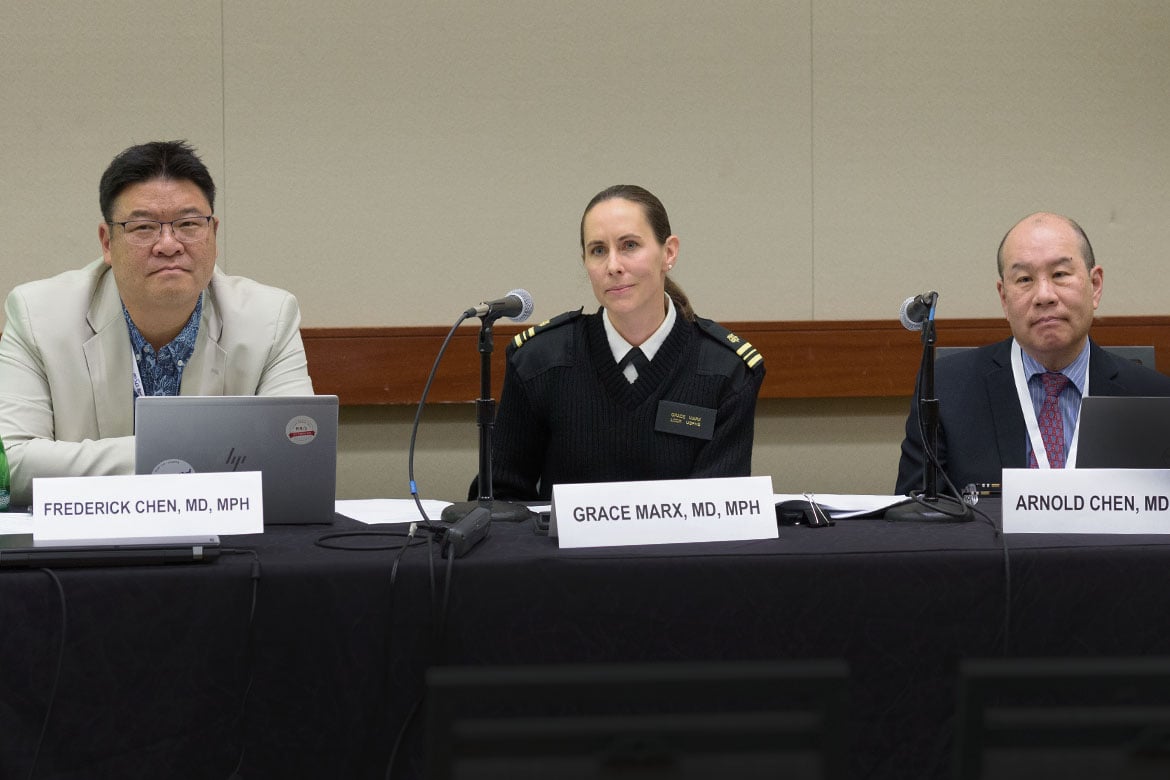Most cases of Lyme disease can be cured with antibiotics, but some patients experience persistent symptoms even after treatment. A lack of evidence-based guidance for how to care for people experiencing persistent symptoms and growing misinformation makes treatment challenging.
Lyme disease is the most common vector-borne disease in the U.S., with an estimated 476,000 people diagnosed and treated each year. The number of people who experience persistent symptoms after Lyme disease is unknown but even a small fraction could result in large numbers of patients. In addition, some patients may believe their persistent symptoms to be due to Lyme disease, even without evidence of ever having had the disease.
Regardless of terminology, these patients often report symptoms that can be severe and debilitating, including fatigue, weakness, cognitive or concentration disorders, and generalized musculoskeletal pain.
With support from the Centers for Disease Control and Prevention (CDC), the AMA has collected expert opinions from physicians with a range of specialties through in-depth interviews and focus groups to inform resources and tools for evaluating and treating patients with concerns about persistent symptoms attributed to Lyme disease.
“The clinical picture becomes much less clear when patients present without typical manifestations of Lyme disease but report persistent symptoms” attributed to this condition, according to Grace Marx, MD, MPH, medical epidemiologist with the Bacterial Diseases Branch at CDC’s Division of Vector-Borne diseases.
On top of that, “the term ‘chronic Lyme disease’ is much less clearly defined and is sometimes used as a catch-all term that is used broadly by patients, clinicians and the general public and often includes people who never had a clear diagnosis of acute Lyme disease,” said Dr. Marx, who presented on this topic during an education session at the 2022 AMA Interim Meeting in Honolulu.
In 2019, the AMA House of Delegates adopted policy noting “that the threat posed by vector-borne diseases is increasing, and we have a limited capacity to respond,” said Frederick Chen, MD, chief health and science officer at the AMA.
Thousands spent on unproven care
Patients with Lyme disease, which is caused by bacteria transmitted by tick bites, are often confused by misinformation that is commonly found in local support groups, online internet forums, and research and legislative advocacy groups.
This can lead to frustration during clinical encounters. Patients who are frustrated are likelier to leave their physician’s care to seek “potentially inappropriate or harmful therapy,” and possible misdiagnosis, Dr. Marx said.
“False and misleading information about the diagnosis and treatment of Lyme disease is spreading and creating confusion for both physicians and patients,” Dr. Chen added. The report conducted with the CDC and Mathematica Policy Research is just the start and “will highlight some of the disinformation that patients with persistent, medically unexplained symptoms attributed to Lyme disease have been exposed to and how some physicians respond to that,” he said.
Physician insight can guide the way
The goal of the project is to “generate insights to help physicians improve care for patients with persistent symptoms that are medically unexplained and attributed to Lyme disease,” explained Arnold Chen, MD, senior clinician researcher at Mathematica.
Within the focus groups, the overarching theme was that because of a lack of clear evidence-based guidelines on best practices for patients with persistent symptoms that are attributed to Lyme disease, physicians have developed their own approaches, Dr. Chen said. And these are based on their own personal experiences with their patients.
Other themes emerged from the focus groups with physicians. Themes indicated that many patients with chronic Lyme disease
- Need physicians to validate their symptoms and make them feel heard, because many feel rejected by doctors who don’t want to address their complex cases.
- Came to their physicians after spending thousands of dollars on extensive testing and unproven treatments and are still experiencing debilitating symptoms.
- Require a lot of time and can be overwhelming to treat but need a trusting relationship with a physician who can work with them to understand their history and challenges to create a detailed diagnostic and treatment plan.
- Have many symptoms similar to fibromyalgia, chronic fatigue syndrome and long COVID, requiring interdisciplinary, multispecialty rehabilitation approaches.
Despite the challenges listed above, physicians have found ways to successfully manage these patients and build trusting relationships. Physicians shared these experiences and helpful tips during focus groups and interviews.
The report presents opinions expressed by physicians who have experience with these patients but does not constitute medical practice recommendations or advice. The AMA-Mathematica report is still in the works and will be published at a later date. With input from physicians and careful consideration, the AMA and CDC hope to create useful and practical resources to improve patient care.





